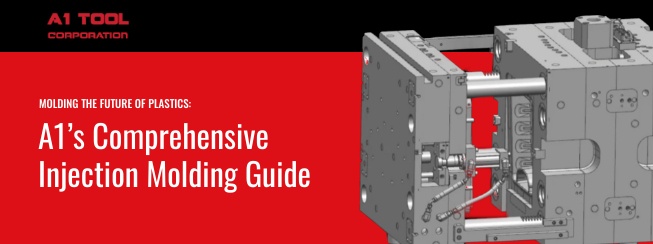Which is More Cost-Effective: Inexpensive Injection Molds or Molds Built to Last?
Injection molding is a process in which plastic pellets are heated to their melting point then injected into a mold. As the plastic cools, it hardens into the shape of the mold to form the part. Beyond this basic process, producing plastic injection molds runs the gamut from low-quality to high-quality production — which directly impacts the price of the molds.
Plastic injection mold costs are often the leading criteria for companies when choosing their molds. But is that a wise business decision?
Today’s competitive global marketplace puts manufacturers under constant pressure to manage time more efficiently. While it’s common to consider the upfront cost of purchasing new molds, it’s also a good business practice to consider other critical factors, such as the performance of the molds, running uptime, and the life of the molds so that companies can manage their resources better in the long run.
Spending a little more can help ensure that molds deliver superior performance and that they last long and, as a result, do not have to be replaced frequently. Furthermore, quality molds help ensure that production runs smoothly, consistently, and on time, versus falling short of business and product demands.
To ensure that new plastic injection molds deliver quality from the first to the millionth shot, companies should consider several critical factors when choosing a plastic injection mold manufacturer — beyond just the initial price tag — including these five factors.
The High Cost of Inferior Products
Low-cost molds manufactured with shoddy practices and standards, typically display defects immediately upon use — from short shots to flashing at the parting lines. These issues result in wasted time and resources.
Buying cheap molds, typically from overseas where production standards are low, often leads to ongoing quality and productivity issues. Common issues with cheap injection molds are the use of sub-standard steel, poor mold building, and poor mold design. Knowing, understanding, anticipating, and installing quality in mold designs eliminates quality issues, like wear spots, hobbing, galling, etc. The worst part about these issues is that sometimes they cannot be fixed unless a new mold is purchased or the cost to repair exceeds the original purchase price.
The High Cost of Replacing Molds
Quality mold designs should last up to 50% longer than other molds on the market — even for up to 15 or 20 years in some cases. What’s more, quality molds require less maintenance because they were built right the first time. If molds aren’t guaranteed for one million shots, companies may be shortchanging their entire production operation.
If a product is needed for many years versus a limited market run, companies should consider investing more in their injection mold designs to prevent continual mold replacement.
The High Cost of Production Downtime
When inferior plastic injection molds fail, they can bring production operations to a screeching halt. This can result in downtime, which eats into production budgets, inventory, and customer deliveries.
High-quality injection molds overcome this risk because they are built according to higher than normal standards. As a result, they will perform well according to businesses’ exact manufacturing specifications, such as the size and intricacy of the parts, the material used, and the number of parts being produced. This will mitigate the risk of expensive production downtime.
The High Cost of Equipment Maintenance
When low-quality molds are used in production runs, they don’t just get damaged, they can also damage machines. As a result, maintenance crews will have to be brought in to fix the broken equipment. This results in expensive downtime, man-hour expenses, and the ongoing risk of future equipment failures.
To avoid high equipment maintenance costs, companies should consider investing more upfront in their injection mold design, including hiring higher-end mold design engineers. This decision can help prevent extensive mold maintenance expenditures.
The High Cost of a Bad Reputation
When manufacturing productivity is compromised by equipment failures, downtime, and poor performance, this can lead to missed customer fulfillment requirements. When companies continually miss deadlines and create supply chain disruptions, the impact can include losing customers — both immediately and in the future due to a poor industry reputation.
The bottom line is that choosing an injection mold manufacturer based primarily on cost savings can end up costing more in the long run. Rather than letting cost be your leading decision factor, also consider the costs of inferior products, replacing molds, production downtime, equipment maintenance, and a bad reputation in the industry.
Instead of always shopping according to the initial price tag, consider working with an injection mold engineer, like A1 Tool Corporation, who will take their time to understand your exact needs. We do things right the first time to reduce your end costs, so you can experience improved cycle times with quality molds that run better than the rest on every measure. Your personal and company reputation are at stake.
Want to learn more? Download our comprehensive injection molding guide today.











